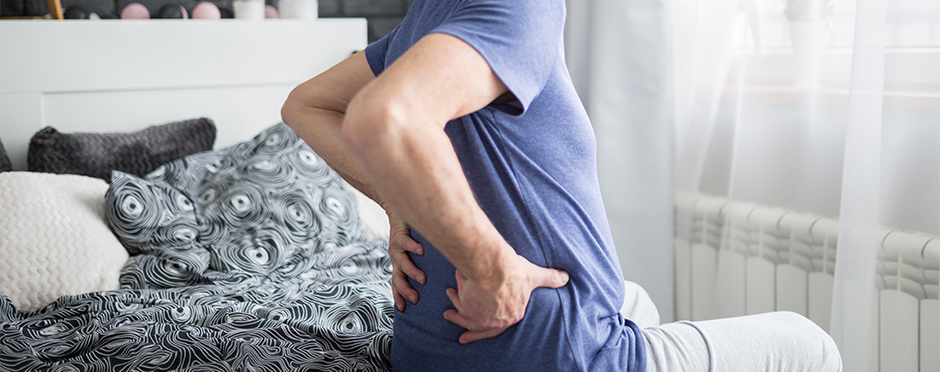
Why Your Posture May Be Causing Low Back Pain
Leave a CommentHave you ever had low back pain while sitting slumped over in your office chair or on your couch while watching TV? Have you ever had low back pain after a day of cleaning your house or garage? If you answered yes to one of these questions, you may be interested to know that your posture can affect the amount of stress that goes through your low back during daily activities.
Placing Stress on the Spine
 Our spines have natural curves that make up an ideal posture. The neck and low back have inward curves and the mid back between the shoulder blades has a natural outward curve. Increased stress and strain is placed on our spines when we sit or stand with bad posture.1
Our spines have natural curves that make up an ideal posture. The neck and low back have inward curves and the mid back between the shoulder blades has a natural outward curve. Increased stress and strain is placed on our spines when we sit or stand with bad posture.1
As a general rule, less stress goes through the low back when its natural inward curved position is maintained.1 If good low back posture is not maintained, one of the structures that can be stressed in the low back is the intervertebral disc.
Our overall body posture and low back position can affect the amount of pressure that goes through the disc as we perform activities throughout the day. For example, when we sit with a slumped posture, 100 percent more pressure goes through our low back discs compared to when we sit with an upright posture and are able to maintain the natural inward curve of the low back.2 Similarly, when we stand with a slumped posture, 125 percent more pressure goes through our low back discs compared to when we stand with an upright posture.2 What’s more, when standing and lifting a weight with a slumped posture, 250 percent more pressure goes through our low backs compared to when we lift a weighted object with a more upright posture.2 These are all reasons why it is important to pay attention to your posture.
Posture Tips
If you are wondering how you can achieve good posture, here are a few tips:
- When sitting down, make sure your shoulders are in line with your hips and you have a slight inward curve in your lower back.
- Try rolling up a small towel and placing it behind your back to help maintain the normal curve of your low back (see image).
- When you are standing still or standing with a weighted object in your hand, make sure your shoulders are in line with your hips and your hips are in line with your knees and ankles.
- Be sure to maintain the inward curve of your low back by avoiding bending forward or slouching over.
If you are concerned about your posture or are experiencing low back pain, make sure to schedule a free assessment at your nearest Athletico location. Our physical therapists will be happy to teach you how to maintain good posture in order to keep your back healthy!
The Athletico blog is an educational resource written by Athletico employees. Athletico bloggers are licensed professionals who abide by the code of ethics outlined by their respective professional associations. The content published in blog posts represents the opinion of the individual author based on their expertise and experience. The content provided in this blog is for informational purposes only, does not constitute medical advice and should not be relied on for making personal health decisions.
References:
1. Kendall FP, McCreary EK, Provance PG. Muscles Testing and Function. 4th Williams & Wilkins. Baltimore, MD. 1993.
2. Wilke HJ, Neef P, Caimi M, Hoogland T, Claes LE. New In Vivo Measurements of Pressures in the Intervertebral Disc in Daily Life. Spine. 1999;24:755-762.
